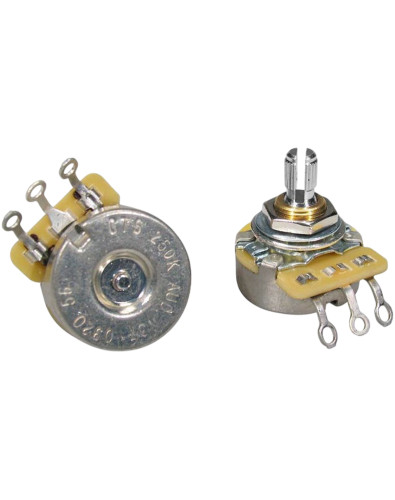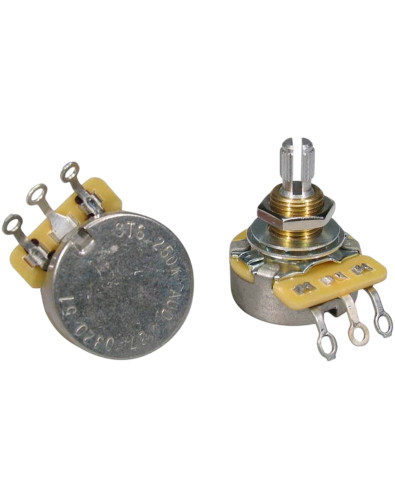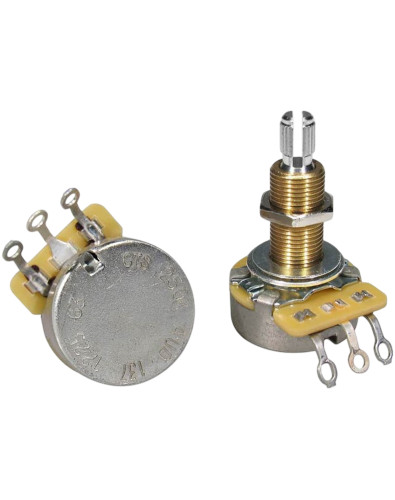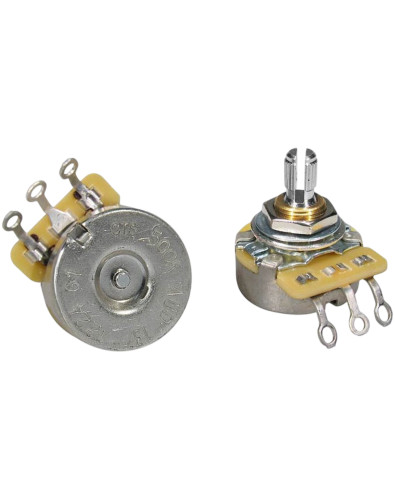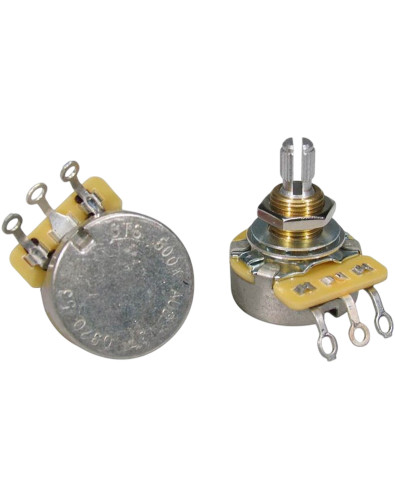- Tips and tricks
- 14 likes
- 8084 views
- 0 comments

How to choose the perfect potentiometer for your guitar? Types, sizes and shaft.
In this article, we will dive into the universe of potentiometers, those small but essential components that control the volume and tone of your guitar.
In the exciting world of guitar building and repair, every detail matters in order to achieve an exceptional instrument. That's why we'll explore the different types, sizes and shafts, providing valuable information for those who want to improve their instrument.
Types of Potentiometers: A Wide Variety of Options for Your Guitar
One of the most important data when choosing our potentiometer is the value.
A potentiometer is nothing more than a variable resistor, so its resistance capacity will be measured on the same scale as these, that is ohms. These will remove high frequencies in inverse proportion to the value of their resistance, which in this case translates into removing treble from single coils but not from humbuckers, so the use of 500 kΩ (kiloohm) potentiometers for humbuckers and 250 kΩ for single coils is usually recommended. This, of course, is just a guide or recommendation rather than an absolute truth, so it is desirable that you try both values (or even a higher one) to decide for yourself and use your ears to decide which ones suits you better.
There is a big question that arises when researching the world of guitar potentiometers: what are the differences between a linear potentiometer and a logarithmic one?
For this reason, we have prepared this list with the different features of these types of potentiometers. It is necessary to clarify that there is no good and bad potentiometer. They are simply different characteristics that each luthier or guitar player will choose according to their sound needs and the characteristics of the instrument where they are going to install these pieces.
Differences Between Linear and Logarithmic Potentiometers for Electric Guitar taking into account the rotational response:

Linear Potentiometer:
1. It provides a constantly changing response in resistance as it is rotated.
2. Often used in tone controls, where a uniform variation is sought.
3. The variation in volume is more uniform and can feel abrupt.

Logarithmic Potentiometer:
1. It provides a non-linear response, being more sensitive in the first turns.
2. Commonly chosen for master volume controls due to its gradual response.
3. Better adapts to human auditory perception, offering smooth transitions in volume.
4. Best for slight changes in volume or tone, especially in the lower ranges.
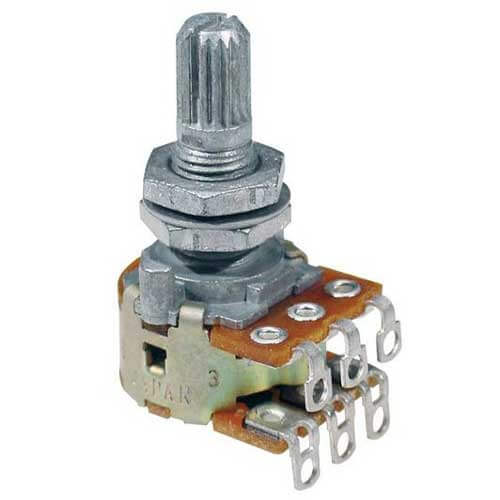
Pins on linear and logarithmic potentiometers
Regarding the potentiometer pins, we can find different lengths and gauges, both in logarithmic and linear potentiometers. In order to see these possibilities in more detail, we have prepared this video:
Potentiometers with split shaft VS potentiometers with solid shaft
This characteristic of the potentiometer pin is evident in the way it feels to the touch.
- Split shaft are ideal for buttons that fit tightly, preventing unwanted movement. It gives the sensation of a harder, more controlled movement.
- The solid shaft allow a lighter movement, without offering resistance to the guitarist's hand movement.
In addition, with split shaft potentiometers we cannot use knobs or buttons with lateral adjustment system. There is a simple reason for this: when tightening the screw, it is easy to end up breaking this shaft. The solution is to use other knobs or to use brass washers that prevent breakage.
Metric Measurement VS Imperial Measurement Potentiometers
Depending on the country or area where they are manufactured, potentiometers have different thicknesses. In those manufactured in the USA, where the metric system prevails, it is normal for the thickness of the pins to be 3/8" (9.5mm). Important brands such as CTS or Bourns use this size. While in those potentiometers coming from the Asian market (the ones we usually find in mid/low range imported guitars) the thickness of the pin is usually around 7.8mm. This does not suppose any problem other than, if you want to equip your guitar with imperial size machine heads, you will have to slightly enlarge the hole. This operation is easy to do with a reamer or drill, depending on the thickness and material to be removed.
By understanding the available options for potentiometer types, sizes and pins, you will be able to customize your guitar with precision, ensuring that each setting is an expression of your style. Visit our online store and check out our potentiometers stock and our full line of electronic and accessories for your guitar. If you have any questions, leave them in the comments and our specialists will contact you as soon as possible.



